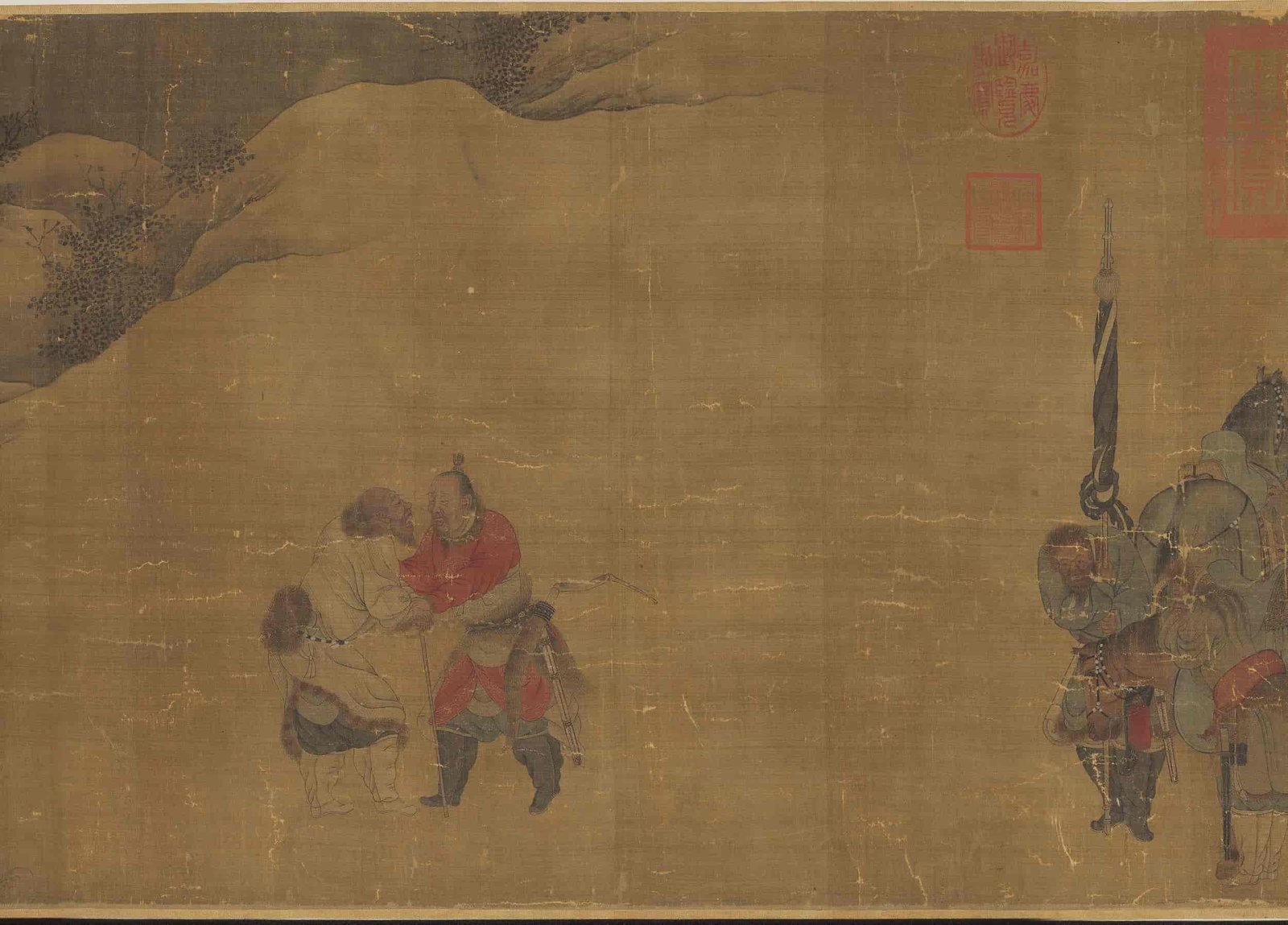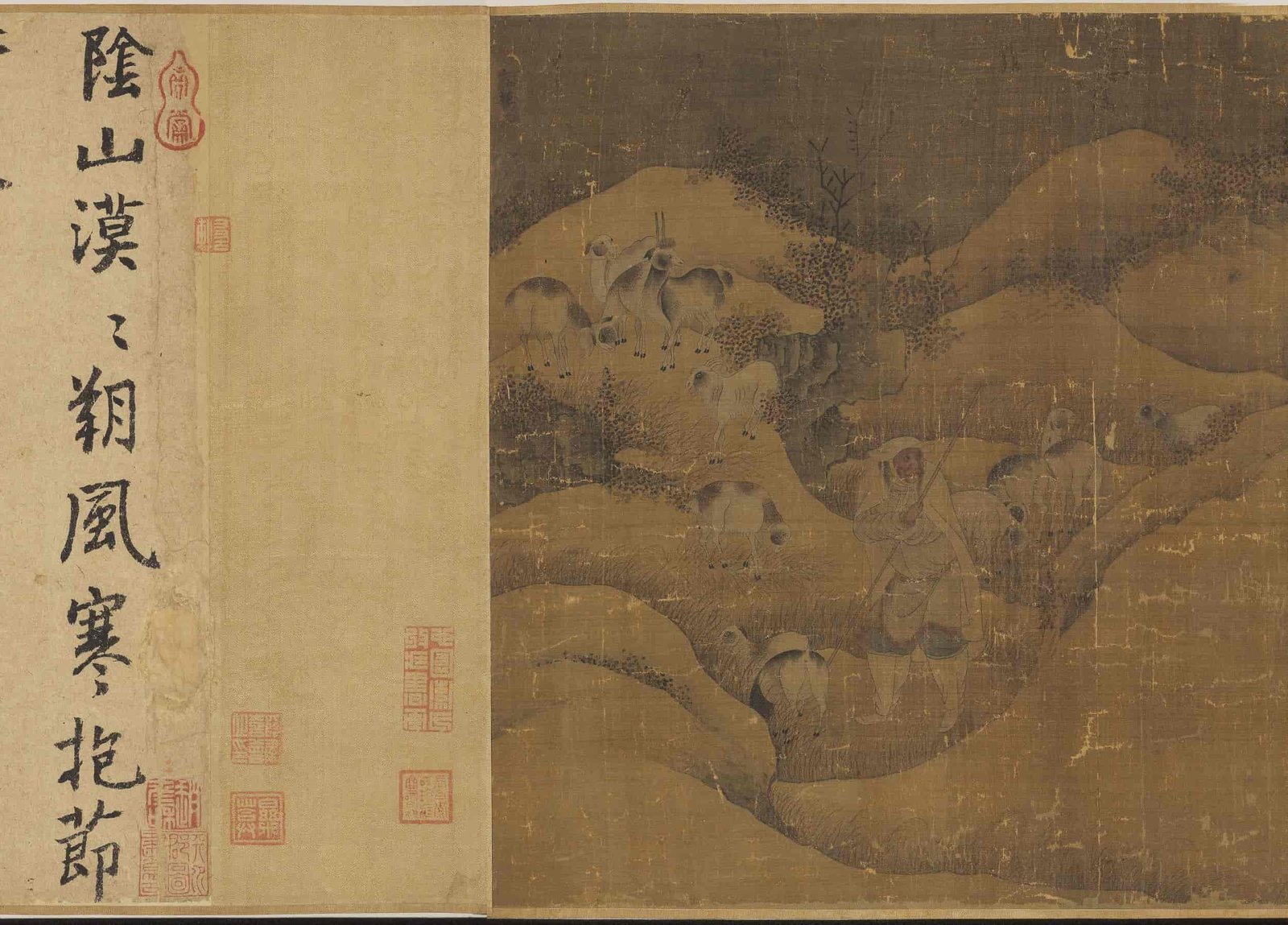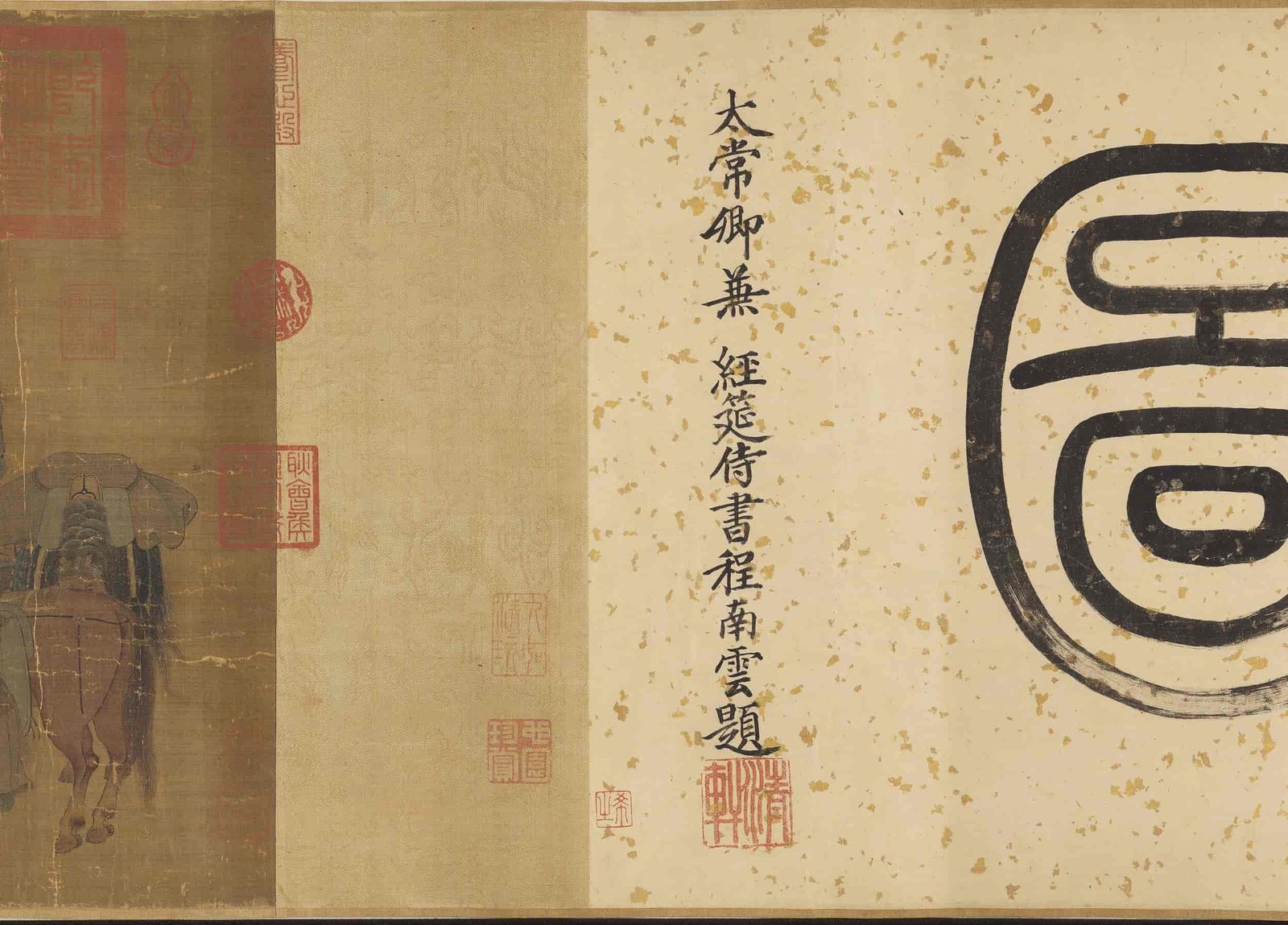Zhou Wenju’s Farewell of Su Wu and Li Ling (《苏李别意图卷》)
This handscroll, attributed to Zhou Wenju (周文矩, active 10th century), a court painter of the Southern Tang Dynasty (Five Dynasties period), depicts the poignant farewell between Su Wu (苏武) and Li Ling (李陵) in the harsh northern wilderness. Painted in ink and color on silk (33.3 × 89.9 cm), the work is now housed in the National Palace Museum, Taipei.
Historical Context
The scene illustrates a pivotal moment from Han Dynasty history:
- Su Wu, a Han envoy, endured 19 years of exile herding sheep in the Xiongnu (匈奴) territory, steadfastly refusing to surrender despite captivity.
- Li Ling, a Han general captured in battle, surrendered after his family was executed by Emperor Wu. Tormented by guilt, he bid farewell to Su Wu, who was finally returning to China.
The painting captures their emotional parting—clasped hands, tearful faces, and a desolate backdrop of icy plains and shivering attendants.
Artistic Features
- Composition and Symbolism:
- The central figures of Su (in white) and Li (in red) are flanked by Li’s attendants on the right and Su’s sheep herd on the left, framed by barren trees and snow-laden winds.
- Horses are depicted from multiple angles (front, side, and rear), showcasing Zhou’s mastery of form and movement.
- Technique:
- Zhou’s **”trembling brushwork”** (chanbi 颤笔), characterized by rhythmic, quivering lines, adds dynamism to robes and landscape textures.
- Subtle color gradations—pale blues for frost, muted ochers for earth—enhance the wintry bleakness.
- Emotional Depth:
- Su’s gaunt face and upright posture convey unyielding resolve, while Li’s hunched shoulders and clenched fists reveal shame and despair.
- A lone goose flying southward (symbolizing Su’s eventual return) contrasts with the Xiongnu tents in the distance, underscoring their diverging fates.
Colophons and Legacy
The scroll includes 13 colophons by Yuan and Ming scholars, such as:
- Li Meng (李孟, Yuan Dynasty):
“Amid the desolate Yin Mountains and bitter northern winds, / The steadfast envoy’s hair has turned gray with time.”
- Cheng Jufu (程鉅夫):
“You herd sheep, yet unlike them, you thrive; / In this meeting, your loyalty survives.”
These inscriptions praise Su’s moral integrity and lament Li’s tragic choices, framing the painting as a Confucian allegory of loyalty and redemption.
Chen Juzhong’s Version
A later adaptation by Chen Juzhong (陈居中, fl. 13th century), a Southern Song court painter, reinterprets the scene with finer details:
- Dimensions: 25.2 × 121.4 cm, silk, now also in Taipei.
- Style: More delicate brushwork and warmer hues, possibly influenced by Yuan revivalism. The sheep are rendered with softer lines, and Li’s armor features intricate geometric patterns.
- Inscriptions: A frontispiece by Ming calligrapher Xu Chu (许初) and Qing imperial seals (Qianlong yulan zhi bao 乾隆御覽之寶) attest to its enduring prestige.
Zhou Wenju: Court Painter of Southern Tang
- Background: Active under Emperor Li Yu (李煜), Zhou specialized in shinü (仕女, court ladies) and historical narratives. His works often fused Tang Dynasty elegance with Southern Tang introspection.
- Legacy: This scroll exemplifies his ability to merge “documentary realism” (e.g., accurate Xiongnu attire) with emotional storytelling, influencing later painters like Chen Juzhong.




评价
目前还没有评价